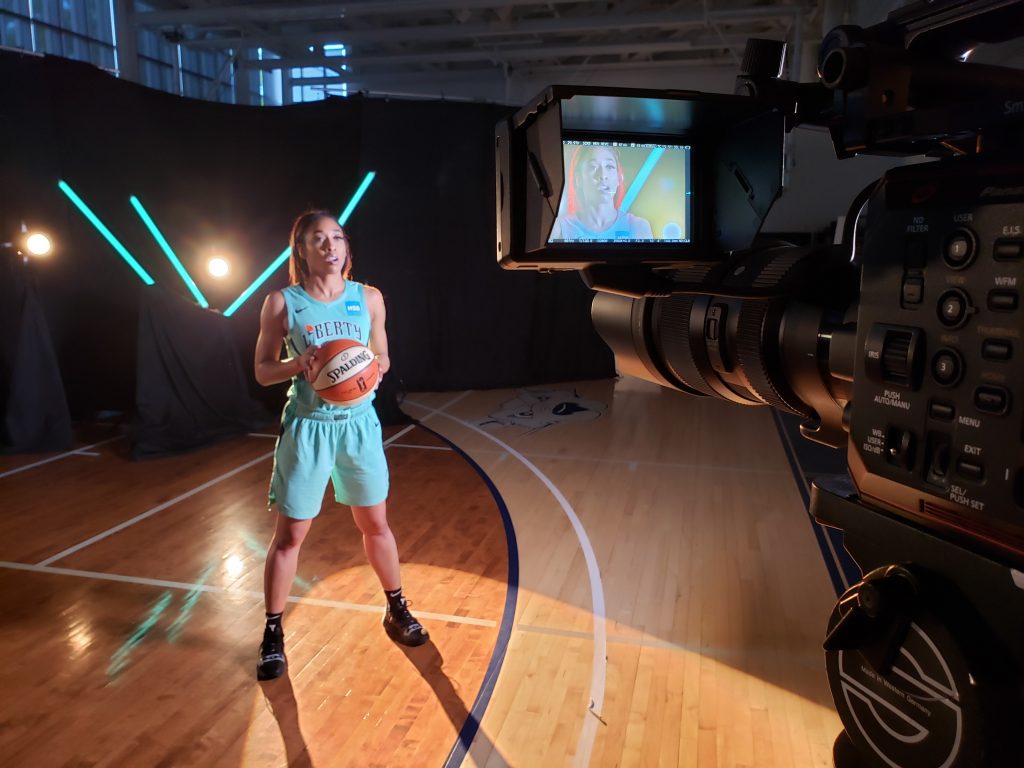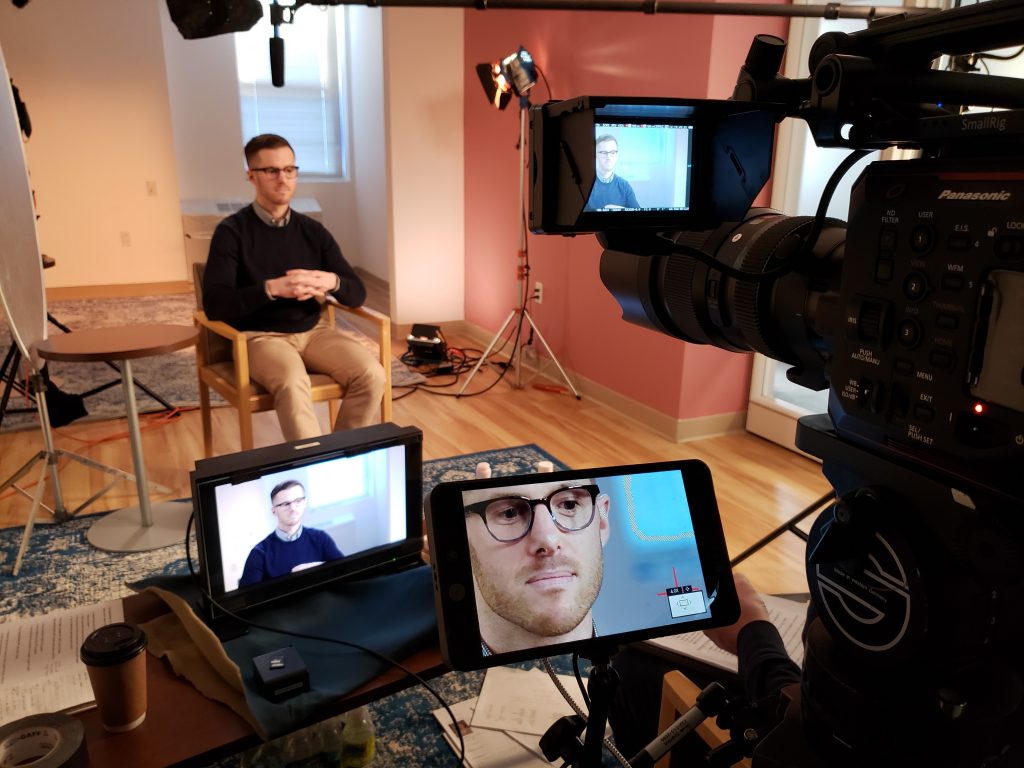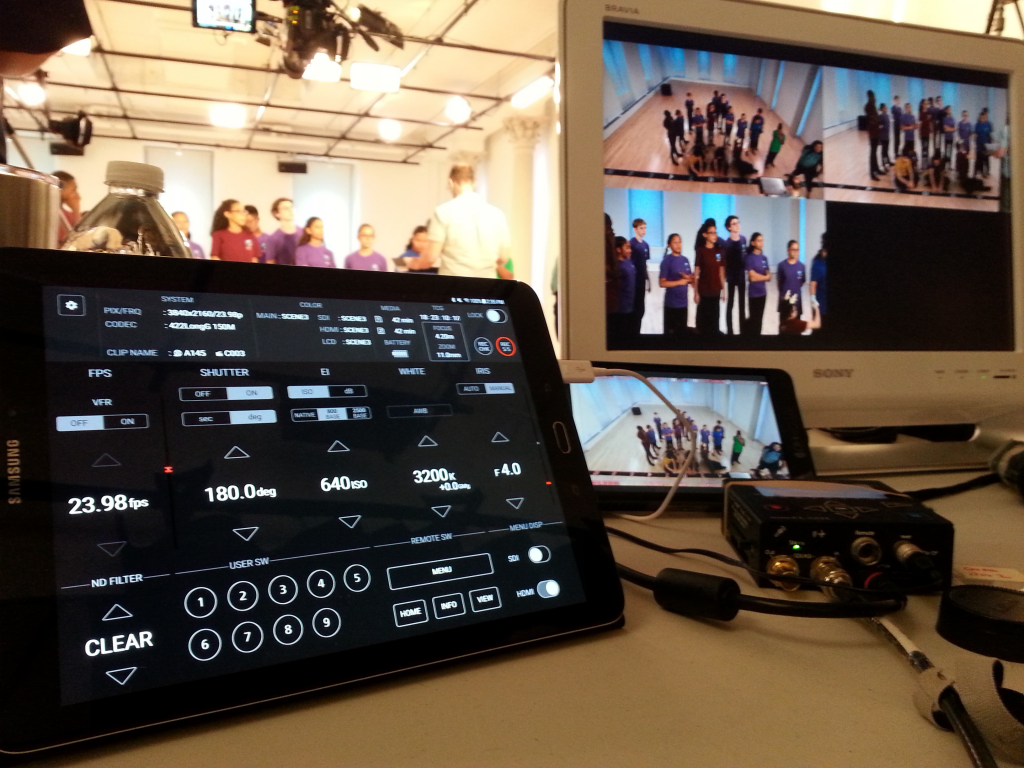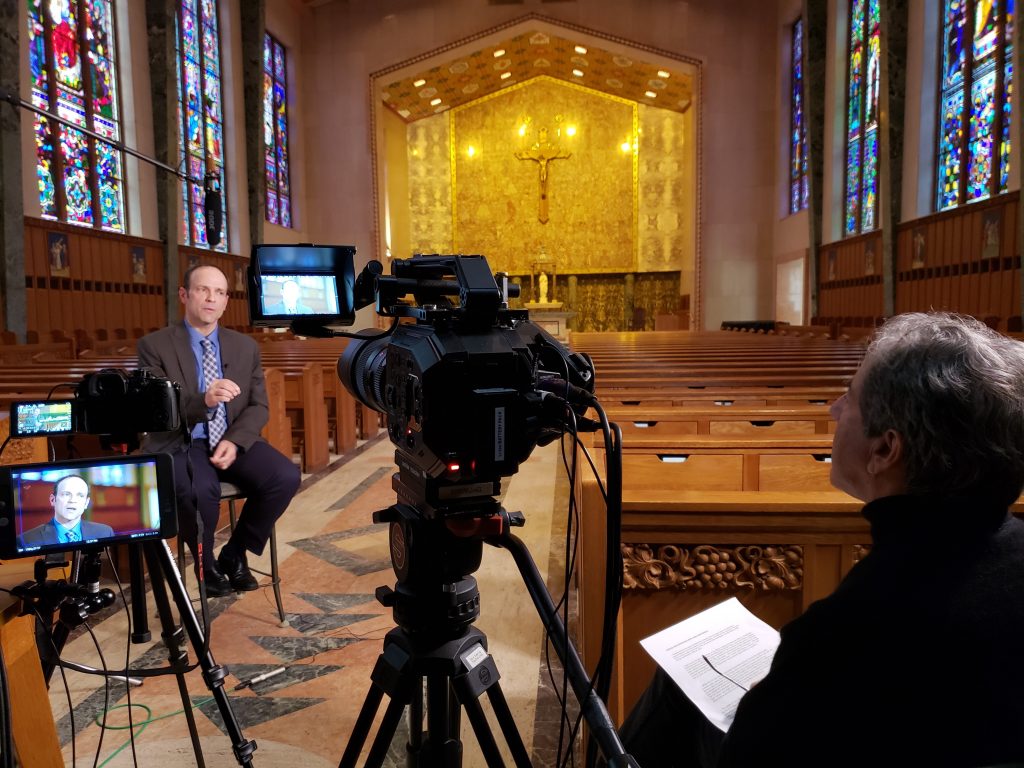July 2, 2019
9 min read
We recently wrapped up our EVA1 Roadshow with stops in Seattle (ABS | Key Code Media), Washington D.C. and Minneapolis (Z-Systems). For the D.C. and Minneapolis events, cinematographer David Sperling led an informative workshop where he discussed working with the EVA1, as well as screening EVA1 clips from recent projects.
Sperling caught the filmmaking bug while he was in college when a friend gave him a non-reflex Bolex 16mm camera that he no longer wanted. This led him to the graduate film school at NYU where he began focusing on cinematography. After NYU, he worked in editorial and eventually saved up enough money to buy an Aaton LTR camera and transitioned himself out of editing to become an assistant cameraperson, and eventually a cinematographer. Sperling has served as Director of Photography for award-winning television series, documentaries and independent feature films, as well as for numerous smaller projects. For the past year and a half, he has selected the EVA1 as his camera of choice.
We caught up with Sperling at the conclusion of the tour to discuss his EVA1 projects, tech specs often requested by clients, using the EVA1’s dual ISO feature, and more.
QUESTION: Can you tell us about some of the projects that you’ve shot with the EVA1?
DAVID SPERLING: Though I’ve been using the EVA1 for a wide variety of projects over the past 18 months, some of my favorites have been the documentaries. Its small form factor and sensitive sensor have helped minimize the intimidation factor when interviewing subjects and have made it a pleasure to work with. Going into an interview situation with lighting that isn’t overly bright and a camera that’s compact really puts the subjects at ease. One of the first projects where I utilized the EVA1 was Los Hermanos – a documentary about two brothers, both world renowned classical musicians born in Cuba, who currently live in Havana and Fort Lee, NJ respectively – and who recently toured the United States and recorded their first album together.
I’ve been shooting all the New York area footage (including rehearsals, performances and the recording session) while a Cuban DP has been handling the Havana footage. Another documentary currently approaching completion is Holy Silence – about the Vatican during WWII. It’s directed by Steven Pressman, with whom I had previously shot HBO’s 50 Children: The Rescue Mission of Mr. & Mrs. Kraus, and with whom I’ll be using the EVA1 to shoot another historical documentary, this one about Monticello. In addition, I’ve been using the EVA1 for some ‘green screen interviews’ documentaries involving sports topics, several commercials, promotional material for Broadway shows, background plates around the NYC area, and a variety of shoots for the NBA and WNBA.

DP David Sperling shooting a promotional video for the New York Liberty WNBA team.
QUESTION: For the majority of your projects, what are typical tech specs that clients request (e.g., frame rates, resolution, format)?
SPERLING: Frame rates are something that can vary depending on the client and their needs and preferences. Some have specific frame rates they want – sports and corporate clients almost always wants 29.97p, while most of the documentaries and commercials I’ll shoot at 24p. Though I’ve shot a bit of HD or 2K with the EVA1, I’d say 90% of my shooting with it has been UHD (3840x2160), and the majority of that has been shot at 150-Mbps LongGOP. The image quality at 150mbps is excellent, and most of the editors working with the footage generate proxy files to work with. Of course, settings are a bit different with slow motion footage, so that really depends what the shoot requires. I personally like the fact that the lower bit rate of LongGOP is less demanding for the recording media (and makes it go a lot further.) I do also tend to use the ‘Dual Record’ feature of the camera.
I don’t normally do the editing, and most of my clients want to walk away at the end of the day with two copies of the footage (on two separate hard drives). We seldom have the luxury of a DIT – so the lower data rate really helps with transfer times at the end of the day. I also have a couple of out-of-town clients for whom I’ll upload the shoot data to their FTP servers, and again the lower bit rate but full image quality of the 150-Mbps really pays off. I’ve had instances where I’ve shot an entire Broadway show in UHD and uploaded it overnight so they could start editing in the morning. On the other hand, for some foreign clients we chose to stay with standard HD 1920x1080 at 50-Mbps to keep the upload times more reasonable when on the road and uploading from hotels or arenas. Of course, some of my clients do specifically request 400 Intra, usually for commercials – though in those cases there’s normally a DIT to handle the extra data.
For the most part I’ll keep the shutter angle at 180 degrees – though when shooting 24p it may get switched to 1/60th to eliminate flickering from 60hz light sources or video screens. I’ve also found that dimmed LED lights can often create problematic flickering at a wide variety of frequencies, and I use the EVA1’s ability to save a variety of shutter scan frequencies to help eliminate the problem when it arises.

Sperling only shoots V-Log 10% of the time. For a quicker post workflow, he usually employs cinema scene files to help make his highlights more manageable.
QUESTION: Did you capture in V-Log? If so, what sort of LUTs do you use in post, or do you work from scratch
SPERLING: I’d say that only about 10% of my shoots are currently using V-Log. It’s really a client and postproduction decision – and most of my clients are looking at fast turnaround times and don’t want to deal with the extra time involved. Again, commercials are more likely to call for V-Log – my documentaries, corporate and Broadway work not so much. On the other hand, for the most part I use one of the cinema gammas (V-255570L1 or V504580L1) to help make the highlights a bit more manageable. The 10-bit recording codec allows for a great deal of color adjustment in post when needed, even when not shooting in V-Log.
QUESTION: How do you typically use the EVA1’s dual ISO feature? (i.e., native or base ISOs)
SPERLING: If I have plenty of light, I typically work with the EVA1 set at Base 800, and then reduce the shooting ISO to about 640. (In brightly lit situations this most often means using one of the built-in ND filters.) In documentary situations when shooting with dim existing light, I normally find myself switching to Base 2500, then setting the camera’s ISO anywhere between 1600 and 4000 as needed. Whenever possible I’ll try to set the camera slightly below the base ISO level, though I have found that the image holds up remarkably well even when adding ISO above the 2500 Base setting.
QUESTION: What lenses do you typically shoot with and why?
SPERLING: I have several of the Sigma Art series lenses – 18-35mm/1.8, 50-100mm/1.8, 14-24mm/2.8, and 24mm/1.4 prime, as well as a Tokina 11-16mm/2.8. They are all fairly fast, possess a pleasing sharpness and match well. Because they are in Canon Mount, I can also control their iris and focus settings through the EVA1 ROP app via Wi-Fi when needed.
They cover most of my needs, though I usually also carry an older Nikon 80-200mm (with manual iris) for my longer lens shots and have some other Nikon glass that I’ll bring as needed (85mm/1.4, 135mm/2.0, 55mm macro, etc.). Nikon lenses adapt to Canon mount easily with an inexpensive adapter, so I keep several adapters in my kit. I also have an older (and very compact) Tokina 17-50mm/2.8 that will often live on the camera when I pack it in a run-around camera backpack – which gives me the ability to pull the camera out of the bag and start shooting immediately when needed. I like having the faster zooms, since they give me more control over my depth of field, particularly when I’m doing interviews and separating the subject from the background.

Sperling will use the EVA1's WiFi adapter and the EVA ROP to make quick camera adjustments.
QUESTION: For your EVA1 projects, what was the most challenging scene or sequence for you to shoot and how did you solve it?
SPERLING: Every project has its own challenges, but one of the trickiest (or most complex) for me was a multi-day multicam shoot I did with three EVA1s in a dance studio that featured about 15 singer/dancers. Matching the color settings of the three cameras was achieved by adjusting the look and color on one camera, saving the settings to an SD card and reading them into the other two. Though the planned coverage was fairly straightforward – high/wide locked off master shot, head-to-toe, and medium shot coverage – the instability of the ‘sprung’ floor of the studio made traditional camera support options useless – particularly for the high angle (which we had planned to mount on high hat rigged atop a 10-step ladder.)
Luckily we had a prelight/setup day and were able to hang a speed rail supported platform to mount our wide camera (with Tokina 11-16mm at full wide) on its high hat just below grid height (11’ above floor level), and then suspend a second EVA1 at eye level using several triangulated c-stand risers and an inverted Sachtler riser and tripod head, attaching to a quick release plate we mounted to the top of the EVA1. The third camera needed to be able to move around, so we placed each tripod leg on sandbags to help dampen the vibrations from the dancers’ movement.

A typical EVA1 setup.
Fortunately, I had installed the Wi-Fi adapter for the EVA1 up in the grid, so I was able to use the ROP app on my tablet to control the camera’s focus, iris and other menu settings, as well as trigger roll and cut. Using 128GB cards, recording at 150mbps LongGOP UHD and using the larger batteries, once we were set, we only needed to bring ladders in to get up to the high angle shot during morning set-up, at lunch and at the end of each day to change batteries and cards.
We had numerous clients on set – enough that they couldn’t all crowd around a single monitor area, so we sent the output of our quad splitter to several monitors, one of which we also used to check the relative exposures of the cameras. We sent two feeds from each camera – one clean for the clients and the other with viewfinder info so we could constantly verify our settings and our roll status.
We were recording a separate multitrack of the audio – with up to 15 singers on individual wireless mics at any time plus a couple of boom mics, and each EVA1 had a tentacle time code box for synchronization. Of course, we were able to visually verify the time code using the viewfinder feeds from the cameras as well!
QUESTION: You were an early adopter of the EVA1. Have you found the firmware updates useful?
In a word… Absolutely! When I bought my EVA1 the only ‘promised’ firmware feature was for the 400-Intra recording codec that arrived in the first major update. But that same update brought RAW output and LCD signal cloning to HDMI as well! Since then, each firmware has included additional features that have proved extremely useful, and just a few weeks ago I did a shoot for the New York Liberty (WNBA) where the latest version 3 firmware updates made a real difference for the shoot. The team had recently been bought by new owners, had newly designed uniforms, and would be playing in a different arena for which they wanted a dynamic ‘scoreboard intro’ video. After some initial concept conversations, I knew that I wanted to shoot at a variety of frame rates, and the addition of HEVC H.265 4K60p 10-bit recording at 200Mbps became a big part of my game plan.
Another feature of the new firmware took on an even larger role – the Quick Switch capability. We had access to each player for an extremely limited length of time, with no little or time between players. I knew from previous commercial shoots where I would change frame rates, sensor scan resolutions, recording codecs and ISO settings between shots that this process not only took time, but also required total concentration – two things that would be in short supply here. So in order to maximize our shoot time and simplify the process, before the shoot started I saved several different setups for 30p, 60p and 120p shooting (including ISO changes to allow me to maintain a consistent f/stop for shallow depth-of-field continuity) – and programmed one of the user buttons to call up the Quick Switch function. This configuration allowed me to almost instantly make setup changes that would easily have taken me more than a minute each time – while minimizing the chance of me making any configuration mistakes. Obviously the new firmware features were a real asset!
Check out WNBA's Liberty Loud at https://liberty.wnba.com/video/liberty-loud/.
To view some of David Sperling's work, visit his Vimeo channel here.
For more information on the AU-EVA1, click through here.
![]()
